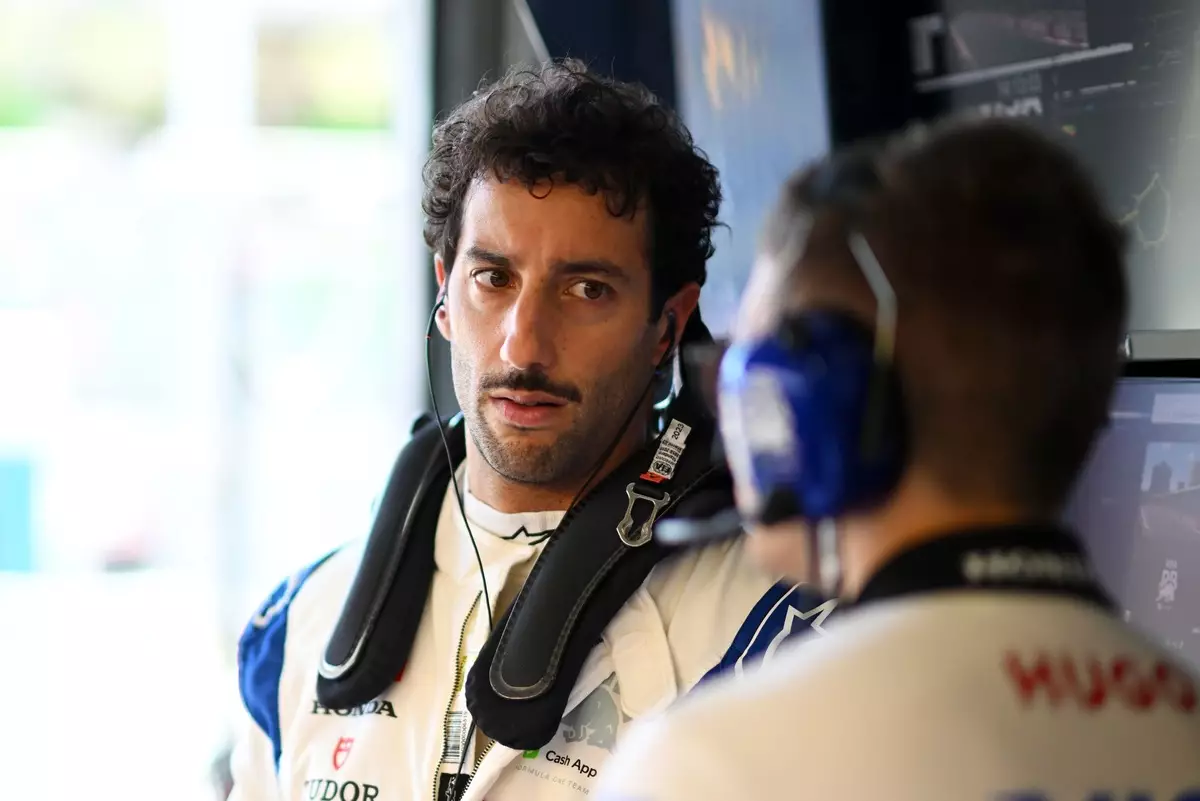The saga of Daniel Ricciardo’s return to Red Bull Racing in 2023 serves as a compelling narrative within Formula 1 history. Originally released from the team that helped catapult him to stardom, Ricciardo’s re-signing was framed as a strategic decision in light of Sergio Perez’s uneven performance. The Australian driver was brought back in the hope that his substantial experience and notable skill set would reinvigorate the team’s competitive edge. Yet, as the following months unfolded, it became evident that the partnership didn’t yield the success that both parties had envisioned.
In contrast to his earlier triumphs with the team, where he often claimed race victories, Ricciardo’s second stint was marred by challenges, including a challenging start due to a severe hand injury during practice. This incident, which occurred at the Dutch Grand Prix, significantly impacted his performance and left the team grappling with the aftermath of underperformance. Ultimately, when Ricciardo’s lack of consistent speed became evident, it marked a pivotal turning point that led to the emergence of Liam Lawson as the future prospect for the team.
One of the most glaring issues that arose during Ricciardo’s tenure was his struggle to maintain a competitive pace consistently. While fans and analysts could spot moments of brilliance—like a commendable fourth place finish at the Miami sprint race and a fifth-place qualifying in Canada—the overarching reality was his inability to replicate that performance regularly. Underlying problems within the car’s configuration may have exacerbated Ricciardo’s challenges, highlighting a troubling disconnect between the driver and the vehicle.
Laurent Mekies, Red Bull’s team principal, acknowledged this discrepancy, stating, “the biggest difficulty is not to be fast one day. It’s to be fast in every race.” His candid admission of collective responsibility echos the ethos of team dynamics in motorsport, underscoring how driver performance is not merely a reflection of their skill but also the product of collective engineering efforts. Ricciardo’s case demonstrated that even a talented driver requires a conducive environment to thrive—a reality that underscores the necessity of cohesive collaboration among drivers and engineers alike.
Following Ricciardo’s less-than-ideal performances, Red Bull opted to pivot towards promising rookie Liam Lawson, who showcased potential that suggested he could be a better fit alongside current champion Max Verstappen. This transition marks a broader trend in Formula 1, where teams are continually seeking the next bright star to cultivate. Lawson’s rise in the ranks is indicative of an evolving team structure careful to adapt and align with the changing dynamics of the sport.
In the wake of Ricciardo’s struggles, Mekies noted that the engineering department benefited from the diversity of data accumulated during Ricciardo’s time. He stated, “We have explored a large part of the car’s envelope with Daniel.” Nonetheless, the emphasis on new talent like Lawson suggests that while Ricciardo contributed significantly to data analysis and car development, the team’s future aspirations rely heavily on fresh perspectives and youthful vigor to foster growth.
Despite the disappointing outcome of Ricciardo’s stint, Mekies highlighted the invaluable experience that Ricciardo brought to the table. The Australian’s insights into race-winning strategies and the broader psychological framework of competing within a championship-caliber team were invaluable. His knowledge served as an anchor for teammates like Yuki Tsunoda and offered an educational facet to the team strategy throughout 2023.
The ability to learn from seasoned veterans is an irreplaceable asset, particularly during periods of transition or technical reorganization. His feedback and racing approach helped to shape the evolving identity of Red Bull as they navigated complexities of both driver dynamics and vehicle performance. As Red Bull moves forward, the lessons learned from Ricciardo’s challenges may ultimately shape their ongoing strategy in nurturing talent and enhancing vehicle performance.
The journey of Daniel Ricciardo during his second spell at Red Bull Racing underscores the intricate and often unpredictable nature of Formula 1. Both the team and driver must grapple with various challenges that influence performance outcomes. As Mekies admitted, a shared accountability emphasizes the collective effort that fuels a racing team’s success. As Ricciardo moves on, and Lawson steps into the spotlight, Red Bull finds itself at a crossroads—a moment to reflect, learn, and evolve towards a brighter future in the relentless pursuit of racing supremacy.


Napsat komentář